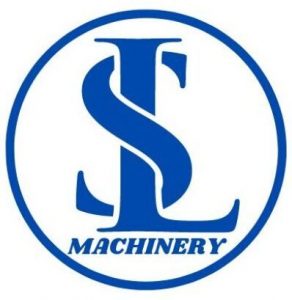
The story of plastic bag manufacturing has undergone transformation from rudimentary methods of manual production to completely automated. The industry is witnessing fast revolutionary changes because of technological improvements, consumer demand, and environmental concerns. At present, automation stands as the nucleus that impacts production, labors, and output positively.
This blog takes you through the various stages of production of plastic bags, ranging from an early manual exercise to today’s cutting-edge automated technologies. The understanding of transformation in this is what will be of essence to appreciate how automation has shaped and is changing the future of the industry.
Manual Production: Early Stages of the Industry
In the past, the manufacturing process of plastic bags had been totally manual and needed a lot of human intervention on all the procedures. Methods of production were time-consuming and prone to error, making them impossible for a business to fulfill a growing demand in plastic bags.
Major Steps in Manual Production
Film Production:
The first process would be the melting and extruding of the plastic resin into a very thin film. Upon cooling, the film would be cut by hand into sheets.
Cutting and Sealing of the Bags:
Workers would then cut the films in small pieces manually, which were later sealed in hot sealing machines. This process was really time consuming, hence monitored very closely.
Quality Control:
The quality of each plastic bag had to be personally checked by the human workers so that each seal was strong with no material defects.
Manual Production Problems
Laborious Nature:
This production was neither cost-effective nor efficient as labor was required at every stage, and large teams were involved in the production of even minute quantities.
The quality in bags was not uniform because plastic bag cutting and sealing are manual processes that, therefore, lead to inconsistency in bag quality, some are improperly sealed or shaped.
Low Production Speed:
Because the process was manual, production was slow and could not be used to make a large number of plastic bags within a short period of time.
The manufacturing of plastic bags was then only in small-scale production outputs. This was because the technology to fully automate this process had not yet been invented. Due to the increased demand for plastic bags, especially in the retail and industrial sectors, plastic bag manufacturers sought ways for heightened efficiency and scale production.
The Age of Automation: Quickening into Higher-Production Volume
As the plastic bag manufacturing business expanded, new technologies were developed with the possibility of automation in production that actually transformed the method of making plastic bags. Automation caused tremendous changes to be undergone, like increased speed in production, quality control, and reduced dependence upon manual labor.
- 1- Extrusion and Blown Film Technology:
This has been the most notable development in the plastic bag-making industry, from the auto-extrusion and blown film to plastic resin melted and blown into a bubble that is then collapsed into a continuous sheet of plastic film. This has enabled manufacturers to produce plastic film far faster and in greater uniformity than by hand.
This also made it possible to produce many varieties of plastic films of different thicknesses and resistances, like high-barrier films to pack food, thin films for retail bags, etc.
- 2- Automatic Cutting and Sealing Machines:
Automated cutting and sealing machines revolutionized the industry for manufacturing plastic bags. Continuous cutting and sealing of plastic bags from a roll of film became possible at unprecedented speeds, which quickly broke all bottlenecks in productivity.
3- Key Features of Automatized Machines:
High-Speed Production: Thousands of plastic bags could be produced through automated machines in just one hour, a far cry from the productivity achieved through manual techniques.
4- Precision Cutting and Sealing:
Automation brought about precision cutting and sealing of the bags. It was possible to deliver always higher quality bags of much fewer defects, with high-speed production due to automation.
Reduced Labor Costs: Automation of repetitive tasks such as cutting, sealing, and quality control would reduce the number of workers in the production line significantly and save on labor costs.
- 5- Introduction of Artificial Intelligence and Machine Learning:
It seems that developments in AI and machine learning have been enhancing plastic bag manufacturing automation for the last few years. Current machines can check the production in real-time and can spot any defects, such as variation of plastic thickness or with sealing.
In case of any machine fault, AI machines can correct the parameters immediately for production to achieve the high-quality results. This has resulted in further waste reduction, energy efficiency, and less downtime.
- 6- Eco-Friendly Production through Automation:
The second area where automation has been very important is in the eventual production of more ecological-friendly plastic bags. Automated systems allow manufacturers to use biodegradable plastics or PCR materials, meaning that they are manufacturing bags from recyclable materials. With the establishment of newer machines, less energy has to be consumed thereby further curtailing the carbon footprint for business enterprises.
Conclusion: How Automation Shapes the Future of Plastic Bag Manufacturing
The shift to the automation of production has therefore brought a complete change to the plastic bag manufacturing industry. This has enabled companies to expand their operations, produce bags of higher quality more cost-effectively, and thus meet the ever-increasing demand for individually customized and eco-friendly solutions.
